Image Gallery: The Life of T. Rex
T. Rex: Thunder Thighs
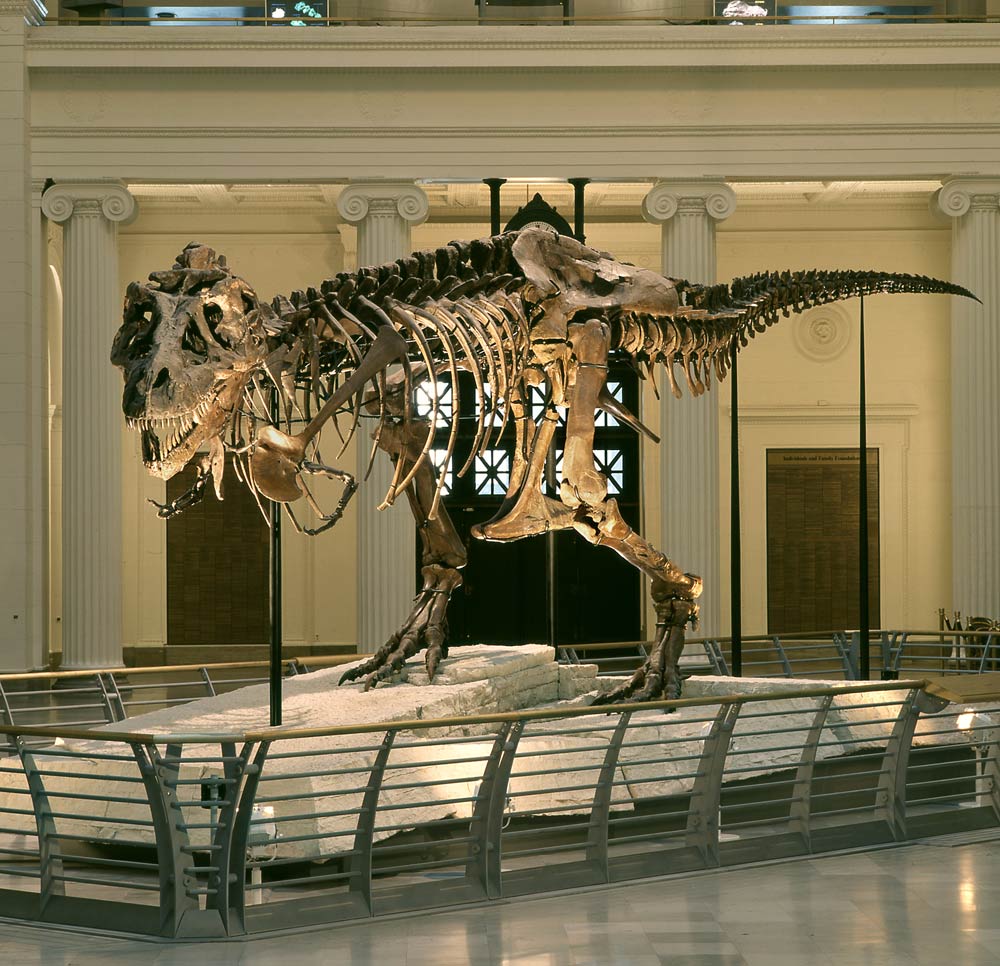
Scientists have figured out with more accuracy how much the tyrannical lizard, Tyrannosaurus rex, really weighed, suggesting the largest and most complete skeleton, named SUE, weighed a whopping 9 tons. (SUE's skeleton resides at The Field Museum in Chicago.)
Fierce Sue
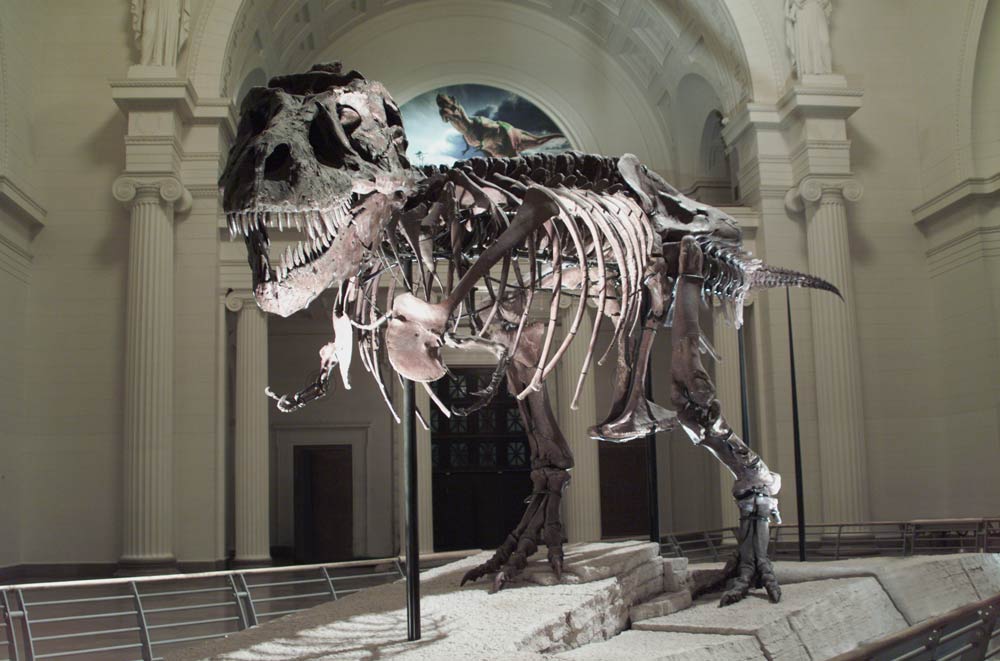
A head-on confrontation with this T. rex named SUE would not be pretty. Scientists aren't sure whether the specimen came from a male or female, though they named it after Sue Hendrickson who discovered it.
Sue's Skull
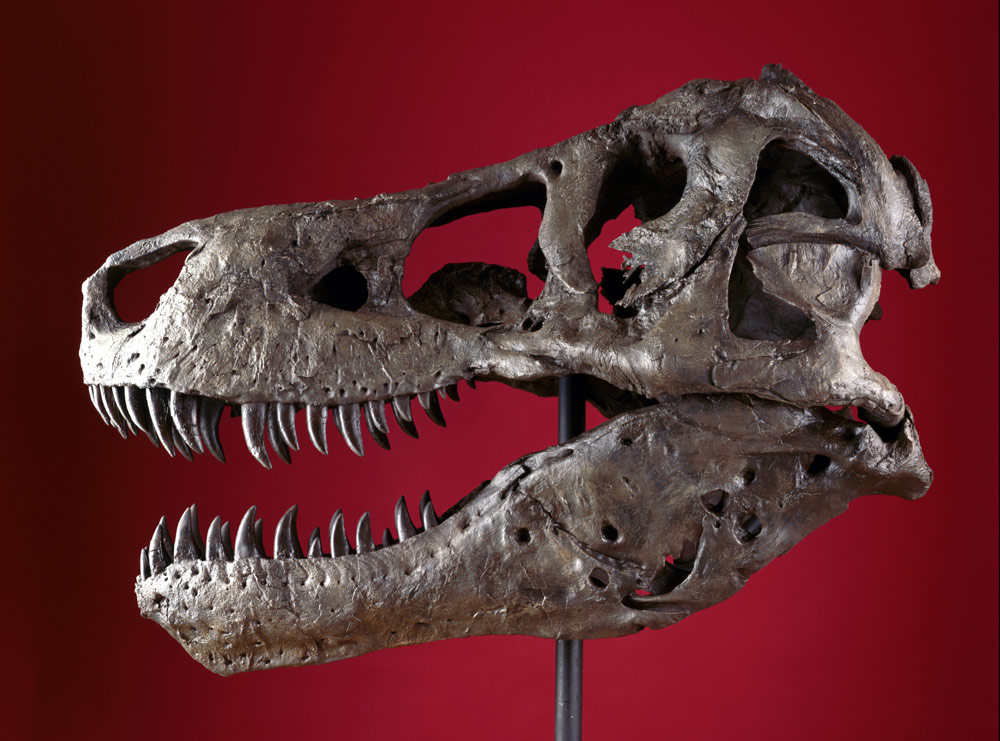
The largest and most complete skeleton of T. rex, named SUE after its discoverer, sported a large skull, measuring some 3.3 feet (1 m) across at the back and 5 feet (1.5 m) long.
T. rex Models
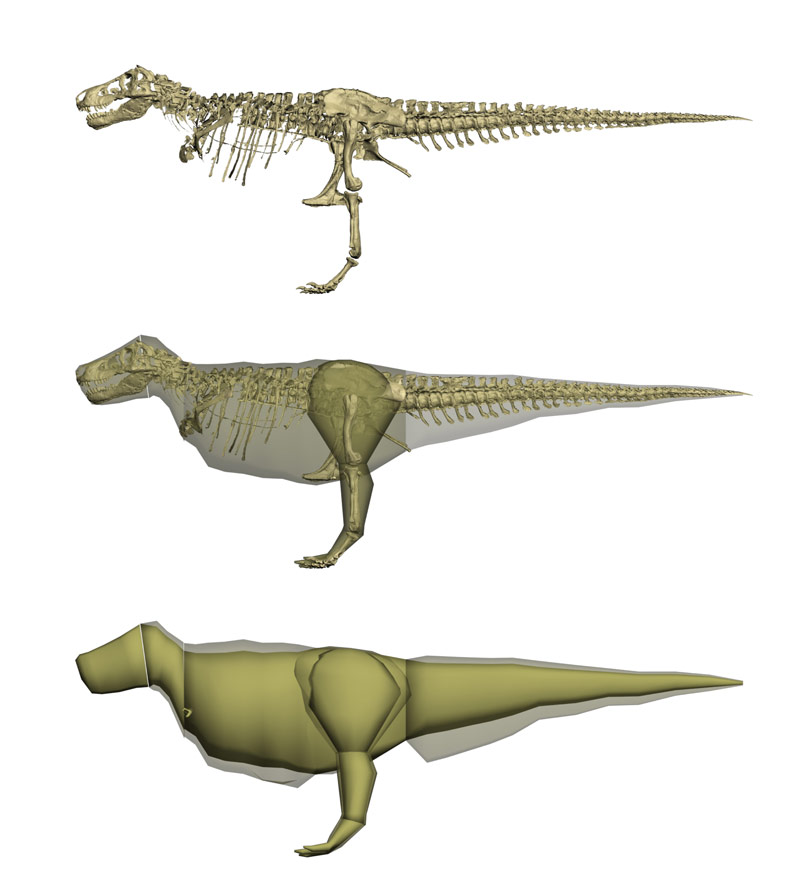
A schematic picture of how the models were designed using SUE as an example. (Top)The scanned skeleton is "straightened" to make it symmetrical, which simplifies modeling of body cross-sections. (Middle) A body volume is wrapped around the skeleton. (Bottom) Body volumes were modeled at three different levels of fleshiness, from skinny (olive) to obese (grey).
The correct mass estimate is assumed to lie between these extremes, the researchers say.
T. Rex Comes Alive
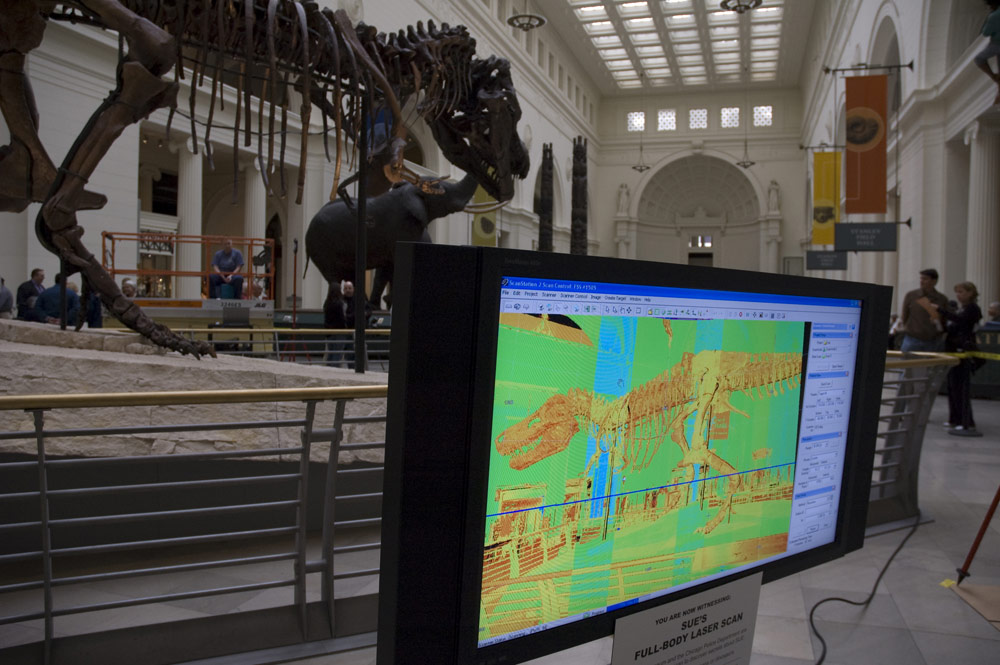
Visitors to the Field Museum in Chicago were able to watch SUE's full body scan in progress.
David & Goliath?
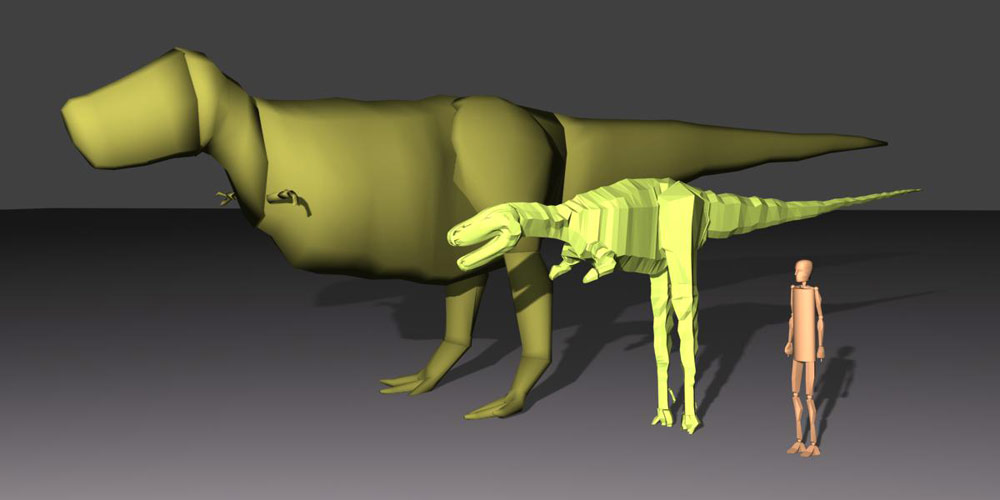
A comparison of the fleshed-out models of the largest T. rex, named SUE, and the smallest (a juvenile named Jane) specimens represent the two extremes of the size spectrum that scientists used to estimate the mass of T. rex. (A human figure is shown for scale.) These are scientific models constructed for calculation of physical properties and are therefore not embellished with aesthetic details, the researchers say.
Sign up for the Live Science daily newsletter now
Get the world’s most fascinating discoveries delivered straight to your inbox.
Fleshy T. rex
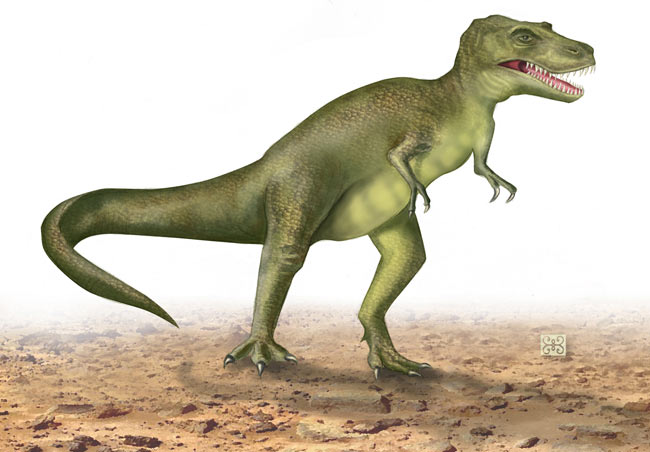
Here a fleshed-out reconstruction of the meat-eater T. rex reveals its bulky rear end and tail muscles, based on previous research.
Teenage Tyrants
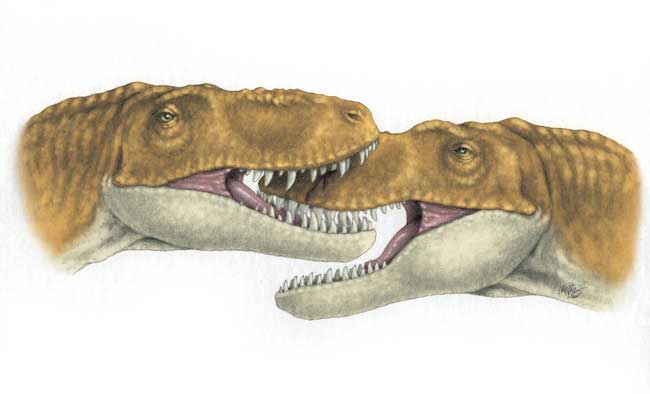
Researchers investigating Jane, the prized juvenile T. rex at the Burpee Museum of Natural History in Rockford, Ill., discovered she received a serious bite that punctured her left upper jaw and snout in four places. As severe as it was, the injury wasn't life threatening and eventually healed over, although it left its mark. The bite marks, described in 2009 in the journal Palaios, were oblong and matched up with the shape of other teen tyrannosaurs, suggesting juvenile T. rexes might have bitten each other in fights. [Read full story]











